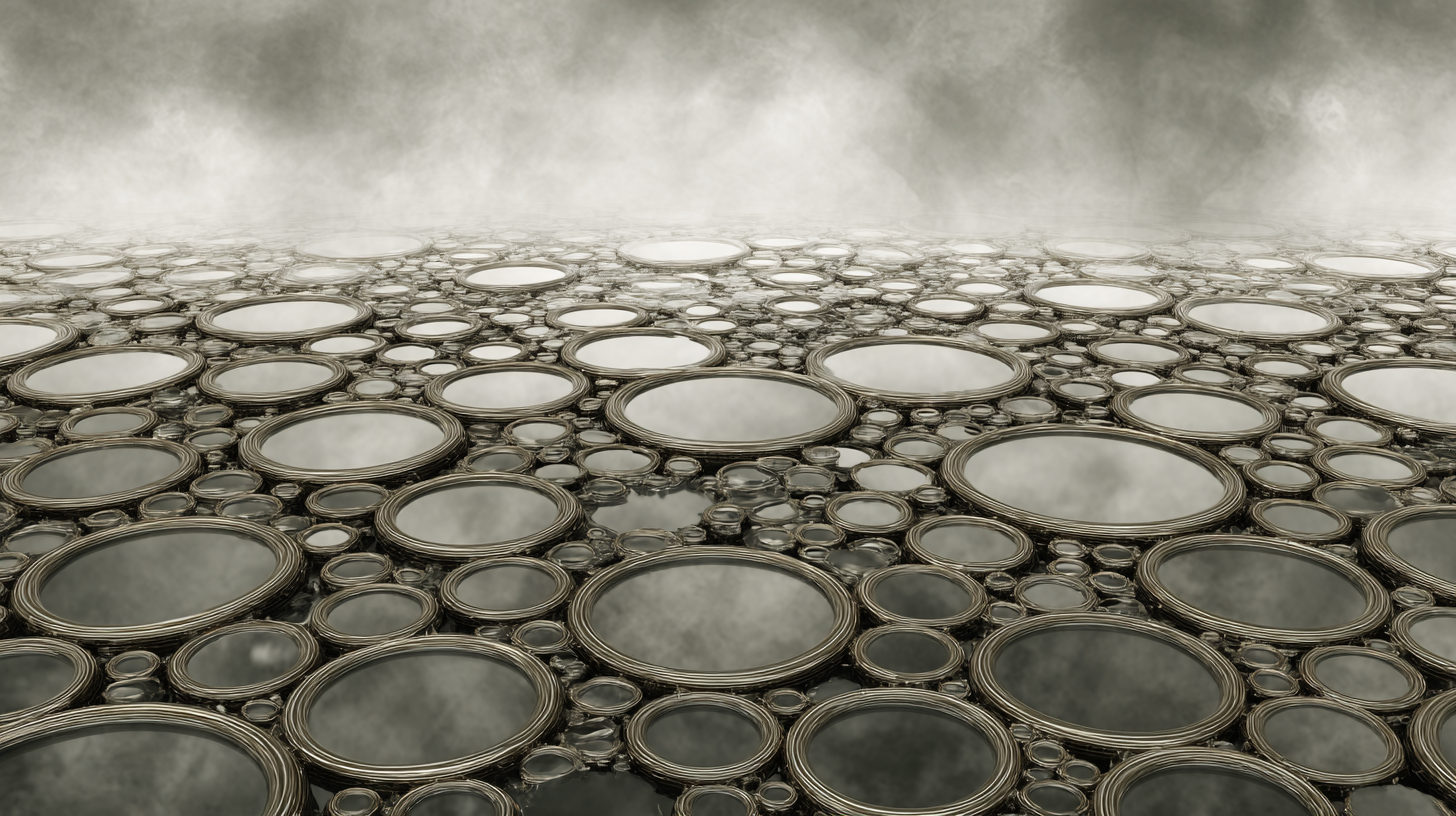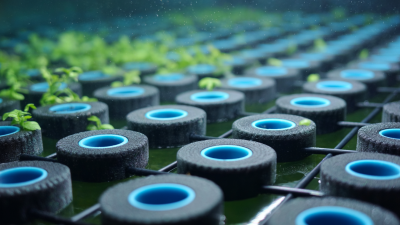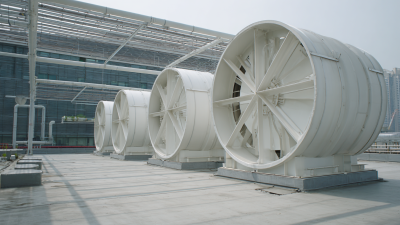In the ever-evolving landscape of wastewater treatment, the efficiency of aeration systems remains a critical factor for optimizing operational costs and enhancing system performance. Among various technologies available, the Membrane Air Diffuser stands out for its ability to deliver fine bubble aeration, significantly improving oxygen transfer rates. According to a report by the International Water Association, the implementation of advanced aeration technologies, including Membrane Air Diffusers, can reduce energy consumption by up to 30% when compared to traditional systems.
Industry expert Dr. Michael Thorpe, a leading authority in aeration technology, states, “The choice of diffuser technology is paramount—using high-efficiency Membrane Air Diffusers not only ensures maximum oxygenation but also contributes to sustainable water management practices.” As facilities grapple with increasing regulatory pressure and the need for eco-friendly solutions, selecting the right membrane diffuser has become imperative. This article will explore the Top 5 Membrane Air Diffusers for 2025, highlighting their features, efficiencies, and the impact they have on aeration systems, ultimately guiding operators towards better choices in enhancing aeration efficiency.

Membrane air diffusers have become critical components in modern aeration systems, primarily due to their effectiveness in enhancing oxygen transfer efficiency. According to a report by the Water Research Foundation, the implementation of high-efficiency membrane diffusers can improve oxygen transfer rates by up to 30% compared to traditional systems. This increased efficiency not only ensures better performance in wastewater treatment but also reduces energy consumption, leading to lower operational costs. The optimal design of these diffusers allows for fine bubble generation, which promotes greater surface area for oxygen transfer and enhances mixing in aeration tanks.
Moreover, membrane air diffusers are noted for their longevity and reduced maintenance requirements. The American Society of Civil Engineers highlighted that these diffusers typically have a lifespan exceeding 10 years, significantly outpacing older technologies. Additionally, with reduced fouling rates, membrane diffusers require less frequent cleaning and replacement. A case study by the International Water Association demonstrated that facilities that transitioned to membrane air diffusers experienced substantial cost savings, with maintenance costs declining by up to 50%. This combination of efficiency, durability, and lower maintenance underscores the advantages of incorporating membrane air diffusers into aeration systems.
This chart compares the aeration efficiency of the top 5 membrane air diffusers based on oxygen transfer rates (OTR) and energy consumption (kWh/m³) for a clearer understanding of their performance advantages.
When selecting a membrane air diffuser, it’s crucial to consider several key features to ensure optimal performance. First, look at the diffuser material and its resistance to fouling and corrosion. High-quality materials like EPDM or silicone can significantly enhance the lifespan of the diffuser while maintaining efficiency. Additionally, the design of the diffuser should promote uniform air distribution for effective aeration, preventing dead zones in the tank that could lead to inefficiencies.
Tip: Always check the manufacturer's specifications for air flow rates and installation recommendations to ensure compatibility with your system.
Another important feature to consider is the size and configuration of the diffuser. Larger diffusers can offer better oxygen transfer efficiency, but it’s essential to find the right balance between size and your system’s specific aeration needs. You should also assess ease of maintenance; diffusers that can be easily cleaned or replaced will save you time and resources in the long run.
Tip: Regular maintenance checks are vital. Clean diffusers periodically to prevent clogging and ensure consistent oxygen transfer.

As we approach 2025, the need for enhanced aeration efficiency in wastewater treatment applications becomes increasingly crucial. Leading industry reports indicate that membrane air diffusers can improve oxygen transfer efficiency (OTE) by up to 30% compared to traditional systems. This remarkable enhancement not only optimizes the biological treatment process but also significantly reduces energy consumption—an essential factor given that aeration often accounts for over 50% of a facility's operational energy costs.
When comparing the top five membrane air diffusers for 2025, key performance metrics such as bubble size, durability, and maintenance requirements are critical. For instance, recent data suggests that ultra-fine bubble diffusers produce smaller bubbles that maximize surface area for gas transfer, leading to improved OTE. Additionally, advancements in membrane material technology have increased durability, with some products now boasting a lifespan exceeding ten years while maintaining efficiency. Such innovations signify a shift towards more sustainable and cost-effective wastewater treatment solutions, reinforcing the strategic importance of choosing the right diffuser for optimal aeration performance.
When it comes to ensuring the longevity of membrane air diffusers, regular maintenance is crucial. A key practice is to routinely inspect the diffuser’s membranes for any signs of wear or obstruction. Clogged membranes can significantly reduce aeration efficiency, and addressing these issues promptly can prevent more serious damage. Additionally, cleaning the membranes with a mild detergent solution can help remove biofilm and other contaminants that accumulate over time, thereby maintaining optimal performance.
Another essential maintenance tip is to monitor the air supply system for any irregularities. Fluctuations in pressure can lead to uneven airflow and stress on the membranes, ultimately shortening their lifespan. Implementing a routine pressure check can help identify any underlying issues early. Furthermore, consider replacing the membranes every few years, depending on usage and condition. Regular evaluations and proactive replacements will enhance both the efficiency and durability of membrane air diffusers, ensuring they continue to perform at their best for years to come.
| Diffuser Type | Aeration Efficiency (%) | Material | Lifespan (Years) | Maintenance Frequency (Months) |
|---|---|---|---|---|
| Fine Bubble Diffuser | 90 | EPDM | 5-10 | 6 |
| Coarse Bubble Diffuser | 75 | Silicone | 3-7 | 12 |
| Membrane Tube Diffuser | 85 | PVC | 4-8 | 9 |
| Decentralized Diffuser | 80 | Polyurethane | 5-10 | 6 |
| AirStone Diffuser | 88 | Ceramic | 6-12 | 15 |
As we look ahead to 2025, the evolution of membrane air diffuser technology promises to significantly enhance aeration efficiency in various applications, including wastewater treatment and aquaculture. One of the key trends is the incorporation of advanced materials that improve gas transfer rates while reducing energy consumption. Innovations in polymers and coatings can lead to higher durability and resistance to fouling, enabling systems to maintain optimal performance over longer periods.
Furthermore, automation and smart technologies are becoming increasingly prevalent in diffuser systems. The integration of IoT (Internet of Things) sensors allows for real-time monitoring and adjustments, ensuring that aeration levels are dynamically optimized based on varying operational conditions. This not only maximizes efficiency but also promotes sustainability by reducing unnecessary energy expenditure. As research progresses, we can anticipate the emergence of more cost-effective and environmentally friendly solutions that will reshape the landscape of aeration technologies in the coming years.







